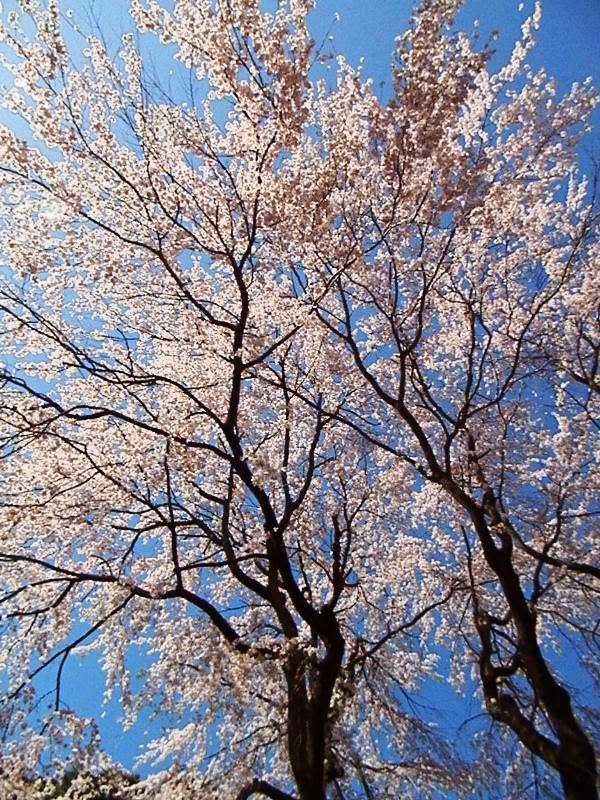Cherry Blossoms around Tokyo Today
Haneda and Narita
In 1964, Tokyo hosted summer Olympic Games. In this year the Japanese Government lifted a ban on Japanese citizens traveling abroad for sight seeing.
However, basically one Japanese citizen was allowed to go abroad only once per year. They could bring to foreign countries only $500 or less with themselves.
In 1966, the restriction on the number of times for overseas traveling was abolished. In 1970, the Boeing 747 was introduced into the Japanese air transportation. Jumbo jets drastically increased the number of Japanese who made overseas trip, though only a little less than 500,000 Japanese went abroad in 1969.
In 1978, Narita International Airport was opened after big delay. The number of Japanese flying abroad continued to increase without stagnation to 17 million in 1995. Since then after some ups and downs, it finally reached 18,490,000 in 2012.
Originally, Tokyo started international air transportation from Haneda International Airport in 1931. Haneda is situated in Ota Ward, Tokyo Prefecture. It takes about 30 minutes by train, monorail, or bus or taxi from Tokyo Railroad Station to Haneda Airport.
But, since 1978, Narita Airport (with only one 4 km runway till 2002) has been positioned as the main international airport for Tokyo while Haneda has become a hub airport for domestic flights. For reference, it takes about one hour by train from Tokyo Station to Narita Airport located in Chiba Prefecture northeast of Tokyo.
However, recently with expansion of Haneda airport, more and more international air carriers have come to use Haneda. Accordingly, foreigners visiting Japan are split into Narita and Haneda.
Number of Visiting Foreigners at Two Main Airports in 2013
NARITA............4,263,463
HANEDA..........1,293,083
Narita International Airport has a unique history. In the aftermath of the anti-Vietnam War movement, Japanese leftist groups and students were violently against the opening of this new international airport in late 1960s and 1970s. So, even today, anti-Narita Airport movement holds some plots within the area included in Narita Airport. That is why Narita has still only one 4,000 meter runway in addition to one 2,500 meter runway.
Around 1966, a group of local residents combined with student activists and left-wing political parties formed a popular resistance group known as the Sanrizuka-Shibayama Union to Oppose the Airport, which remained active until fracturing in 1983.[7] Similar strategies had already been employed during the postwar era to block the expansion of Tachikawa Air Base and other US military facilities in Japan.[7] In June and July 1966, the Union sent formal protests to the mayor of Narita, the governor and vice-governor of Chiba Prefecture and the prefectural office of the Liberal Democratic Party.[7] In November 1967, when the Transport Ministry began surveying the perimeter of the airport, Union members set up roadblocks. The Zengakuren radical student union then began sending students to Narita to help the local farmers.[7]
Eminent domain power had rarely been used in Japan up to that point. Traditionally, the Japanese government would offer to relocate homeowners in regions slated for expropriation, rather than condemn their property and pay compensation as provided by law. In the case of Narita Airport, this type of cooperative expropriation did not occur: some residents went as far as using terror by threatening to burn down new homes of anyone who would voluntarily move out.[citation needed]
Under the 1966 plan, the airport would have been completed in 1971, but due to the ongoing resettlement disputes, not all of the land for the airport was available by then. Finally, in 1971, the Japanese government began forcibly expropriating land. 291 protesters were arrested and more than 1,000 police, villagers and student militants were injured in a series of riots, notably on September 16, 1971, when three policemen were killed in a riot involving thousands. Some protesters chained themselves to their homes and refused to leave.So, for some old Japanese Narita is not an ear-pleasing name of a place. However, if an inland earthquake occurs in or around Tokyo, Haneda Airport would be more damaged and dangerous. You had better get in and leave Japan through other international airports than Narita or Haneda.
http://en.wikipedia.org/wiki/Narita_International_Airport#Construction
http://turbos86.harowota.com/2013/08/traveling-from-the-airport-into-tokyo/
*** *** *** ***
Mar 3:31 There came then his brethren and his mother, and, standing without, sent unto him, calling him.
Mar 3:32 And the multitude sat about him, and they said unto him, Behold, thy mother and thy brethren without seek for thee.
Mar 3:33 And he answered them, saying, Who is my mother, or my brethren?
Mar 3:34 And he looked round about on them which sat about him, and said, Behold my mother and my brethren!
Mar 3:35 For whosoever shall do the will of God, the same is my brother, and my sister, and mother.






